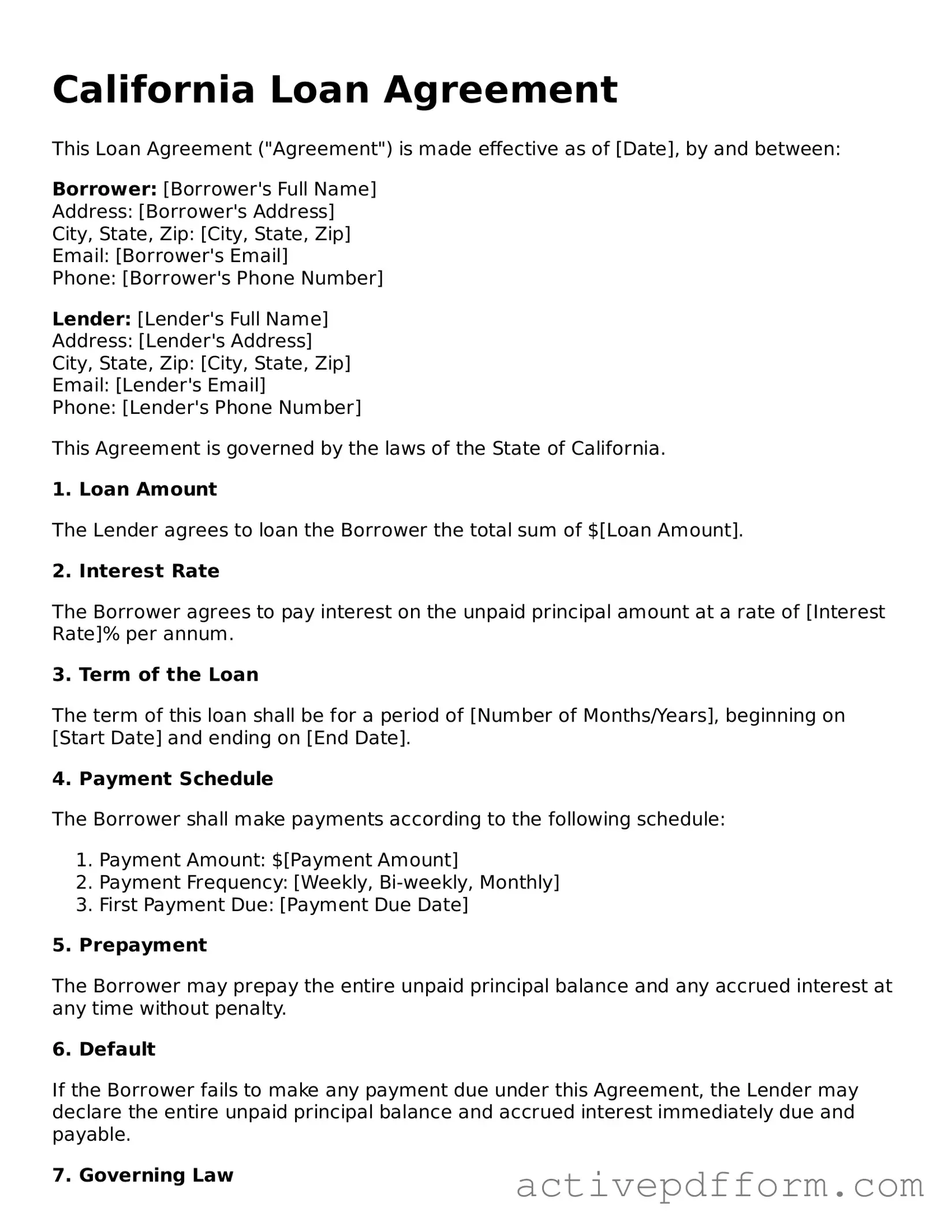What is a California Loan Agreement form?
The California Loan Agreement form is a legal document used to outline the terms and conditions of a loan between a lender and a borrower. It specifies important details such as the loan amount, interest rate, repayment schedule, and any collateral involved. This agreement serves to protect both parties by clearly defining their rights and obligations.
Who can use a California Loan Agreement form?
Any individual or business in California looking to lend or borrow money can utilize a Loan Agreement form. This includes personal loans between friends or family, business loans, and even loans involving real estate transactions. It is essential for both parties to understand the terms before entering into the agreement.
What are the key components of a Loan Agreement?
A well-drafted Loan Agreement typically includes several key components: the names and addresses of the parties involved, the loan amount, the interest rate, the repayment schedule, any fees or penalties for late payments, and provisions for default. Additionally, it may outline any collateral securing the loan and conditions under which the agreement can be modified or terminated.
Is it necessary to have the Loan Agreement notarized?
While notarization is not always required for a Loan Agreement to be legally binding in California, it is highly recommended. Having the document notarized adds a layer of authenticity and can help prevent disputes over the agreement's validity in the future.
What happens if the borrower defaults on the loan?
If the borrower defaults, the lender has the right to take specific actions as outlined in the Loan Agreement. This may include demanding immediate repayment of the outstanding balance, charging late fees, or taking possession of any collateral. The lender may also pursue legal action to recover the owed amount, depending on the terms of the agreement.
Can the terms of the Loan Agreement be changed after it is signed?
Yes, the terms of a Loan Agreement can be modified after it is signed, but both parties must agree to any changes. It is advisable to document any amendments in writing and have both parties sign the new agreement to ensure clarity and legal enforceability.
Are there any specific laws governing Loan Agreements in California?
Yes, Loan Agreements in California are subject to both state and federal laws. The California Civil Code contains provisions that govern loans, including interest rate limits and disclosure requirements. Additionally, federal regulations may apply, particularly for loans involving consumer credit. It is crucial to be aware of these laws to ensure compliance and protect both parties' rights.
What should I do if I have a dispute regarding the Loan Agreement?
If a dispute arises regarding the Loan Agreement, the first step is to communicate directly with the other party to try to resolve the issue amicably. If that fails, consider mediation or arbitration as alternative dispute resolution methods. If necessary, legal action may be pursued, but it is often advisable to consult with a legal professional before taking this step.
Where can I obtain a California Loan Agreement form?
California Loan Agreement forms can be obtained from various sources, including legal stationery stores, online legal service providers, or through legal counsel. It is important to ensure that the form complies with California laws and is tailored to the specific needs of the parties involved.
